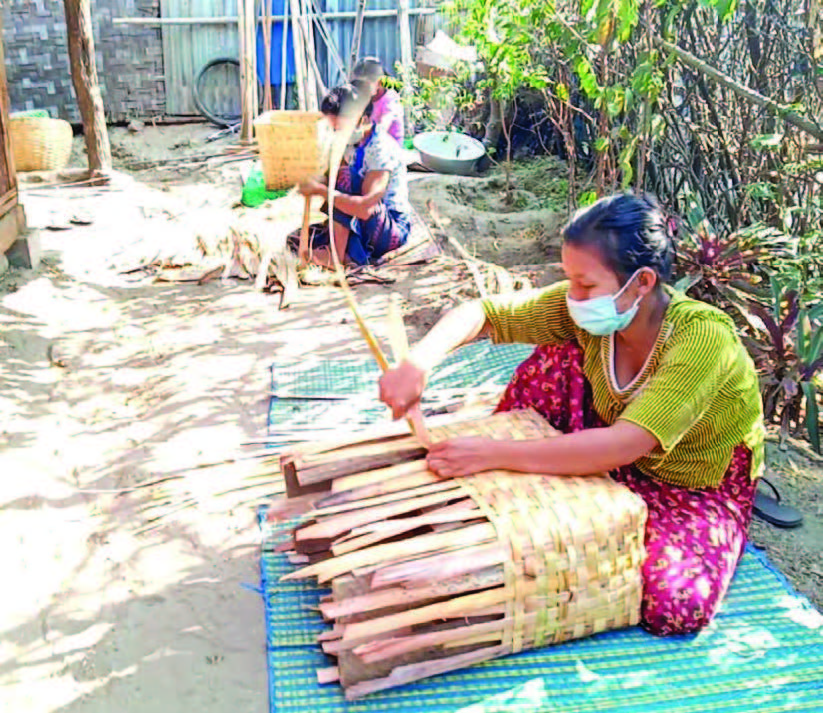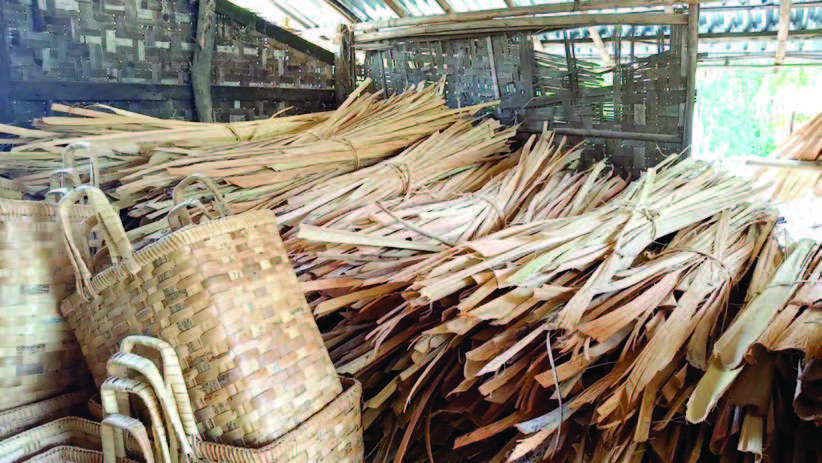By Nat Ye Hla
IN Myanmar, about 60 per cent of the handicrafts or folk art comes from rural areas. The production of the hand-made products resumed recently with reflow of commodity after they stopped for about two months due to the COVID-19 pandemic.
With the ancestors passing the folk-art skills to the next generation, the businesses have been established in the villages since many years.

The products include hand woven daily utensils and household products to artistic blacksmith products. This is also occurring with the traditional hand weaving of textiles in hilly areas, especially in Chin and Kachin State, handicrafts in Mon State, and ceramics in Kyaukmyaung near Mandalay and in Twantay near Yangon.
The kind of utensils we use on a daily basis could be a barometer of local demand of our folk art. The traditionally produced artistic products are safe for us because the raw materials made for the utensils such as dried wheat stalks, leaves and branches from palm trees are chemical-free.
One of the main problems we are facing today is that the hand-made products are facing competition from imported ones produced by industries.
Besides, the country’s younger generation is not interested in making handicrafts or learning the folk art of their ancestors.

Myanmar’s arts and crafts industry is threatened almost to extinction, as a result of shortage of skilled labourers and lower demand.
To ensure higher demand in the country, we will have to reduce the use of plastic bags and encourage recycling.
We can dissuade sellers from using plastic bags. His calls for cooperation between civil society, the public and government departments.
GNLM







